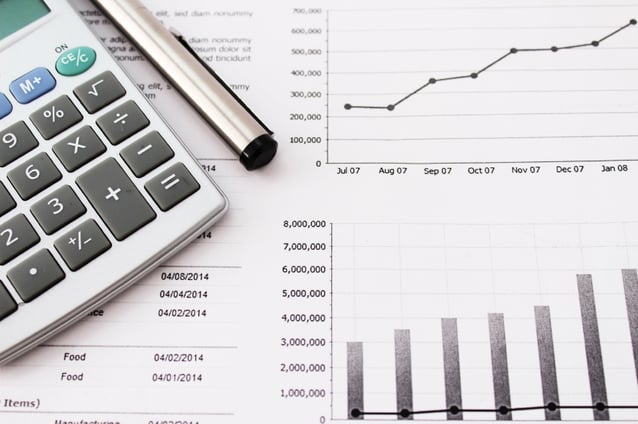 Updated April 13, 2022
Updated April 13, 2022
If you run a small business, you should consider your financial reports as your closest, most trusted advisor. They give you accurate, up-to-date information on how your business is running, and, when you know how to read them, they can help you make smarter business decisions too. Keep reading for our three favorite ways to use financial reports to make smarter business decisions.
1. Determine Profits and Losses
Your Profit and Loss Statement (P&L) is one of the most basic financial reports to keep, but it’s also one of the most vital. That’s because a P&L statement summarizes the revenues, costs, and expenses incurred by your business over the course of the fiscal quarter (or year).
Without a P&L statement, it’s impossible to know whether or not your business is actually turning a profit, so if for some reason you aren’t keeping one, grab a free template and get started ASAP. You want to be accumulating historical data about your business’ profits and losses, so that you can compare where you’re at now, to where you were in the past.
Analyzing and comparing historical data will help you identify your strengths and weaknesses, and determine if your business is growing at a desired, sustainable rate. For example, say your business unexpectedly doubles in revenue one quarter, but at the same time, your profit margin dropped. By comparing this quarter’s expenses to last’s, looking for areas where costs increased disproportionately, you can identify areas of inefficiency in your business and work to rectify them.
2. Use a Balance Sheet
The balance sheet is another vital source of financial information for your business. It’s useful for understanding the overall financial health of a business at a glance. A balance sheet is made up of three columns, which must equal out following the formula Assets = Liabilities + Owner Equity. Assets represent the things your business owns and uses in its operations (machines, inventory, etc.), while liabilities represent any debt from business loans, and owner equity is money you’ve invested in the business yourself.
Knowing how to use a balance sheet can give you a general overview of how stable or vulnerable a business might be. For example, a business that has many non-current assets — i.e. assets that cannot easily be converted to cash, like specialized machinery, intellectual property, etc. — that it has paid for by taking out high-interest loans is more vulnerable to financial difficulties than one with mostly cash assets, and little debt.
Analyzing the balance sheet of your own business can be useful in determining if you should liquidate your high-risk assets, or if you want to know if your business can afford to take on more debt in order to expand. If you were going to invest in another business (or buy it outright) going over their balance sheet would help you begin to determine how risky the investment might be.
3. Analyzing Cash Flow Statements
Cash flow statements are extremely important for small businesses. A cash flow statement shows how changes in items on the balance sheet affect the operations of a business, for example when non-cash assets (e.g. inventory) are converted to cash, this is reflected in the cash flow statement.
Being familiar with how a cash flow statement works is of the utmost importance for small businesses, especially those just starting out. This is because a cash flow statement is the most accurate financial document to consult in determining the short-term viability of a business. For example, it demonstrates whether there is enough liquid cash to pay the bills at the end of the month. Familiarizing yourself with your cash flow statement, and checking it often will help you avoid surprises, and help you keep your day-to-day operations running smoothly.
Running a small business takes a lot of work, but educating yourself on different business techniques can save you time in the long run, (and make a whole lot more money too!).




